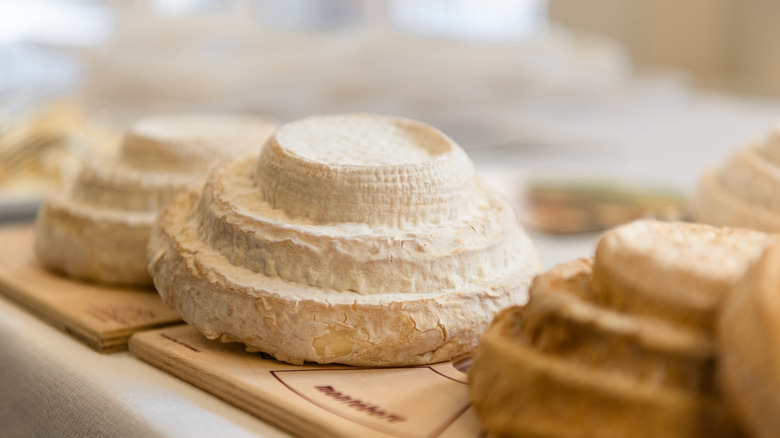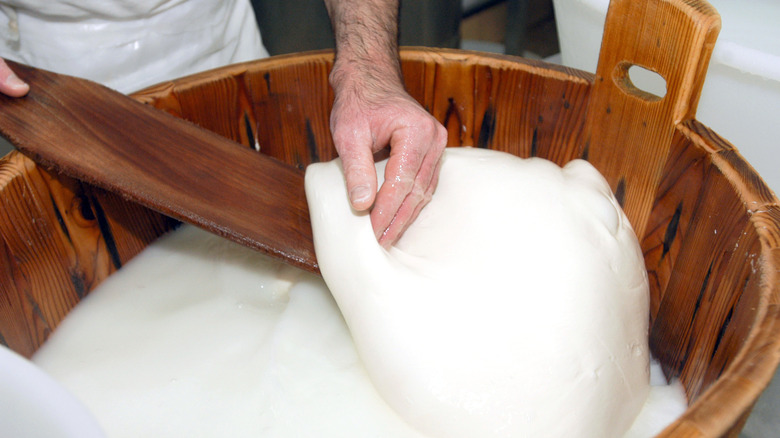Why Montébore Cheese Nearly Went Extinct
It's not surprising that few of us have heard of Montébore cheese, let alone tried it. However, it's been around since the 10th century, according to Eataly. But this cheese has not maintained the fame of its fellow Italian cheeses, though it was popular in Italy for hundreds of years (via La Cucina Italiana).
Montébore is thought to be Leonardo da Vinci's favorite cheese, probably because he chose it as the only cheese on the menu at the wedding celebration of Italian royals Isabella of Aragon and Gian Galeazzo Sforza (per Turin Italy Guide). Some believe Isabella was da Vinci's lover and the model for his famous "Mona Lisa." It seems a fitting choice for a wedding as the cheese is in the shape of a three-layered cake, though some say it was modeled after castle ruins in Piedmont (via Piemont Agri Qualita).
Montébore is an artisan product in the purest meaning of the word. The online shop, Guilla's Mountains, an enthusiastic vendor of Montébore, explains that this cheese of ancient origins is made of 70% raw cow's milk and 30% raw sheep's milk. It is still handmade, the curd is cut with traditional wooden implements, and the molds are filled and turned by hand.
Montébore's Near Extinction
The tradition of making Montébore was almost lost forever and did indeed come to a standstill for 30 years because after World War II, the rural population moved to larger towns for work, and the village of Montébore was all but abandoned. Fortunately, cheesemaker Roberto Grattone sought out the last known maker of Montébore, Carolina Bracco (per Atlas Obscura).
In 1999, Grattone teamed up with Italy's now international Slow Food movement. Montébore was championed by the Slow Food Presidium, a branch of the Slow Food Foundation that supports slow food communities and producers who work to protect biodiversity. The cheese was also added to the foundation's Ark of Taste, a worldwide project meant to protect and promote small-scale traditional products and skills. Food diversity is considered one of our best bets for combating growing concerns about food security and environmental decline (per Slow Food). Fortunately for posterity and biodiversity, Montébore is still made by the Grattone family in its place of origin, the Tortonesi hills.

